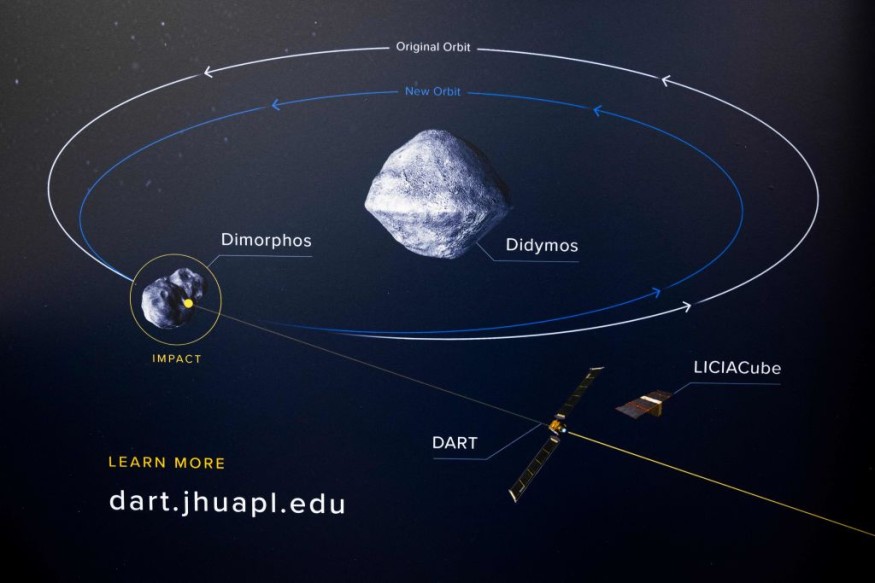NASA released a video on Wednesday, March 1, showing debris from the Double Asteroid Redirection Test (DART) mission colliding with asteroid Dimorphos. DART mission's primary purpose is to see if it is possible to alter the course of a potentially hazardous space rock to avoid Earth.
The 1,200-pound DART spacecraft collided with Dimorphos on September 26, 2022. It successfully shifted the asteroid's direction after colliding with it at 13,000 miles per hour during the test.

DART Collision Released 1,000 Tons of Asteroid Material Into Space
The new Hubble Space Telescope images published on March 1 show dust and debris shooting away from Dimorphos and its bigger asteroid partner, Didymos, after DART's collision. It is estimated that the impact sent 1,000 tons of old asteroid debris into space, Live Science reported.
Jian-Yang Li of the Planetary Science Institute in Tucson, Arizona, said in a statement via the Space Telescope Science Institute (STScI) in Baltimore, which operates the science program of Hubble, that this is the first time they witnessed an object colliding with an asteroid in real-time. Li noted that there are a lot of things going on during the collision that would take some time to figure out.
The new footage was accompanied by a paper, titled "Ejecta from the DART-produced active asteroid Dimorphos," which is
published on Wednesday in the journal Nature by Li and 63 other DART team members. The publication is one of five published in Nature that provides a comprehensive assessment of the DART impact and its aftermath.
3 Stages of Dimorphos Evolution
Based on Hubble's observations, there are at least three stages of Dimorphos debris development. An ejecta cone was formed first followed by furling debris into the asteroid's orbit and finally the tail moved behind the space rock because of the pressure from the solar wind or stream of charged particles released by the Sun.
The newly released video from NASA shows these three stages in detail from approximately 1.3 hours after impact. As Live Science reported, the video showed Dimorphos and Didymos at a distance where the two space rocks cannot be distinguished separately.
About two hours later after the collision, the debris can be visibly moving at a speed of over 4 miles per hour (6.4 kph), which is fast enough to overcome the gravitation pull of the asteroid system.
After 17 hours following the collision, the cone shape began to develop. STScI experts noted in the statement that the most apparent structures are whirling, pinwheel-shaped features, which are linked to the gravitational attraction of Dimorphos' asteroid partner Didymos.
They added that the final stage depicts debris moving behind the asteroid where the lightest particles go the quickest and farthest away from the asteroid. Nevertheless, the processes are still unknown, as Hubble saw the tail breaking into two streams for a few days and the mechanism by which this occurred is unknown.
Many devices on Earth and in orbit imaged the DART impact, such s the James Webb Space Telescope, and additional results will emerge as the data is analyzed, interpreted, and processed.
RELATED ARTICLE: NASA James Webb, Hubble Space Telescope Capture Impact of DART Asteroid Impact [LOOK]
Check out more news and information on Space in Science Times.












